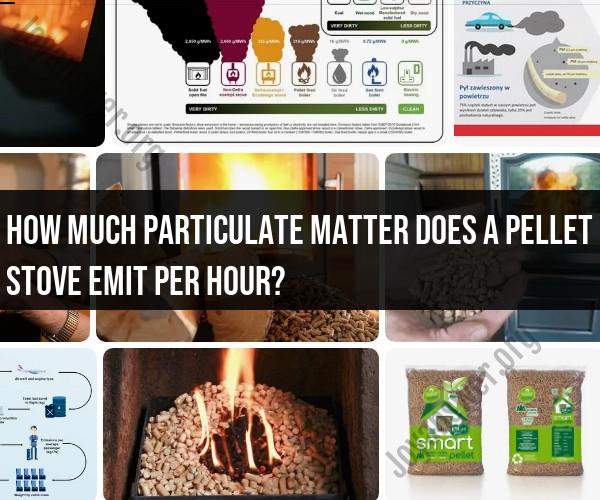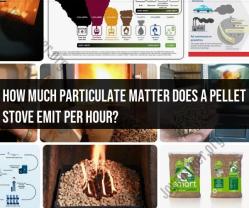How much particulate matter does a pellet stove emit per hour?
The amount of particulate matter (PM) emissions from a pellet stove per hour can vary depending on several factors, including the type and efficiency of the stove, the quality of pellets used, and the operational settings. However, pellet stoves are generally considered a cleaner and more environmentally friendly heating option compared to traditional wood-burning stoves or fireplaces.
Many modern pellet stoves are designed to be highly efficient and produce low emissions. They typically emit fewer particulate matter and other pollutants compared to traditional wood-burning stoves. Some pellet stoves are even certified by organizations like the U.S. Environmental Protection Agency (EPA) for their low emissions.
To get specific information about the particulate matter emissions of a particular pellet stove, you should consult the manufacturer's specifications, product documentation, or look for any certifications, such as EPA certification, which often includes data on emissions. Keep in mind that different pellet stoves may have different emissions levels, so it's important to choose a model that meets your environmental and efficiency requirements.
If you are concerned about the environmental impact of using a pellet stove, it's a good idea to choose a high-efficiency model and use high-quality pellets, as these factors can help minimize emissions and maximize efficiency. Additionally, regular maintenance of your pellet stove, including cleaning and proper operation, can also help reduce emissions and ensure it operates efficiently.
What is particulate matter emission from a pellet stove?
Particulate matter (PM) emission from a pellet stove is the release of tiny particles into the air when the stove is burned. These particles can be very small, and some of them can be so small that they can get into the lungs and cause health problems.
PM emission from pellet stoves is typically caused by incomplete combustion of the wood pellets. This can happen if the stove is not properly ventilated, if the pellets are not dry, or if the stove is not properly maintained.
How is particulate matter measured in pellet stoves?
PM emission from pellet stoves is measured in grams per hour (g/hr). This measurement is typically taken using a device called a particulate matter analyzer. The analyzer is placed in the exhaust pipe of the stove, and it measures the amount of PM in the exhaust gas.
What factors influence the amount of particulate matter emitted per hour?
A number of factors can influence the amount of PM emitted per hour from a pellet stove, including:
- The type of wood pellets used
- The moisture content of the wood pellets
- The cleanliness of the stove
- The efficiency of the stove
- The operating conditions of the stove, such as the burn rate and the air intake
Are there regulations or guidelines for controlling pellet stove emissions?
Yes, there are regulations and guidelines for controlling pellet stove emissions. The US Environmental Protection Agency (EPA) has set standards for the maximum amount of PM that can be emitted from pellet stoves. The EPA also has a program called the Pellet Fuels Institute (PFI) that certifies pellet stoves as meeting the EPA's emission standards.
In addition to the EPA regulations, many states and local governments also have their own regulations for pellet stove emissions.
How can you reduce particulate matter emissions from a pellet stove?
There are a number of things you can do to reduce PM emissions from your pellet stove, including:
- Use only high-quality wood pellets that are certified by the PFI.
- Make sure the wood pellets are dry before using them.
- Clean your stove regularly.
- Operate the stove according to the manufacturer's instructions.
- Have the stove inspected and maintained by a qualified professional on a regular basis.
Here are some additional tips for reducing PM emissions from your pellet stove:
- Avoid burning wet or moldy wood pellets.
- Burn the stove at a moderate setting.
- Keep the stove's air intake clean and free of debris.
- Vent the stove properly to the outside of your home.
By following these tips, you can help to reduce PM emissions from your pellet stove and protect your health and the environment.


